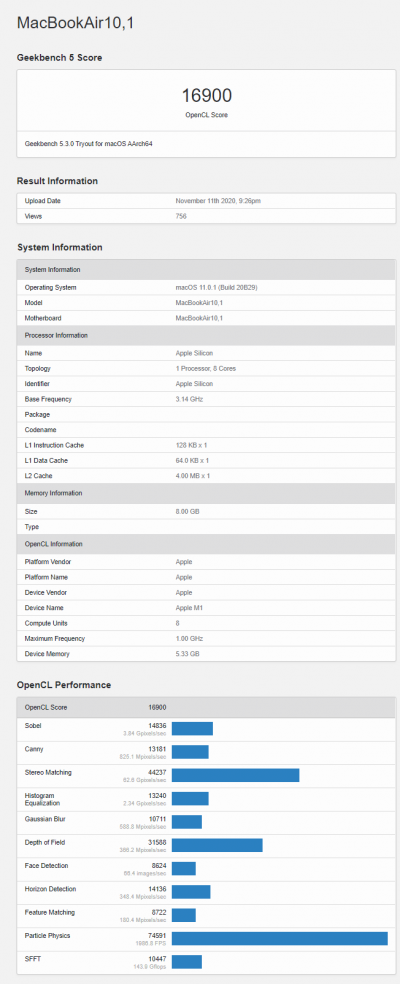I don't see why... It's much easier to scale up than it is to scale down.
Why do you say this? I'm not sure it's true.
Right now they've released basically one System on a Chip with basically one CPU/GPU set. (I assume the 7/8 GPU cores is some kind of binning procedure, where some with a defective GPU core are just turned off and sold as the low-end)
So it's one chipset they're selling. I don't think getting additional performance by just adding extra cores is that easy - or more to the point, very expensive. (And may not help at all with single core performance).
Apple's done extremely well at squeezing out performance from a base chipset. They have fantastic insight into the software that's actually run, where they can improve, etc. They can produce specialised SoCs at massive volumes - but that advantage starts to go away when they move into more and more cores for lower-volume products like high-end desktops.
Sure, doubling the number of bigboy cores may help - but there's always the issue that extra cores starts to have modest gains after a point - except for somewhat specialized software. And the increased performance comes at an increasingly high price for machines that aren't produced in volumes to drive down costs. As with current macpro, the market for that becomes increasingly narrow.
I personally would guess that with these low-end machines with impressive performance (supposedly), we'll see more bifurcation between a range of systems based mostly on this system on a chip, within which differentiation will be mostly things like additional memory, more ports, and other 'features.' (Sure there will be some performance differentiation as well but less dramatic than in past, and more from things like extra memory than just raw processing power, perhaps more specialised processing units - after all the phones and ipads have signal processors, image processing, machine learning etc - than from just bigboy cores). The bottom line is, most consumer/non-specialised pro will be covered by that main chipset/SoC functionality.
The next significant leap up to macpro / imacpro - nosebleed expensive and stupid-many cores and everything else they can throw at it. But - as now - tailored to quite limited markets or need for massive expansion.
I'm kind of guessing that even coming up with a system that uses standard ddr4 is unlikely - the SoC RAM seems to be very different in performance characteristics, and mixing different memory types may require some deep plumbing alterations to the system and compilers (drivers in a different sense). And assuming they come up with SoCs that reach to 32 or maybe 64 gig, they'll decide anything beyond that is in NosebleedPro market only.
Anyway, wild speculation on my part. But overall I'm guessing that's where we'll end up - two very different market segments (Nosebleed and Everything Else), and the differentiation within those will be more modest or feature oriented, not processor cores.
Also expect apple would prefer to iterate one limited chipset and increase performance on that as quickly as possible, with the coolest new features, to get more of an upgrade cycle going again. Way more attractive to apple than minor Intel upgrades where perfomance increases modestly year on year and everyone waits.


